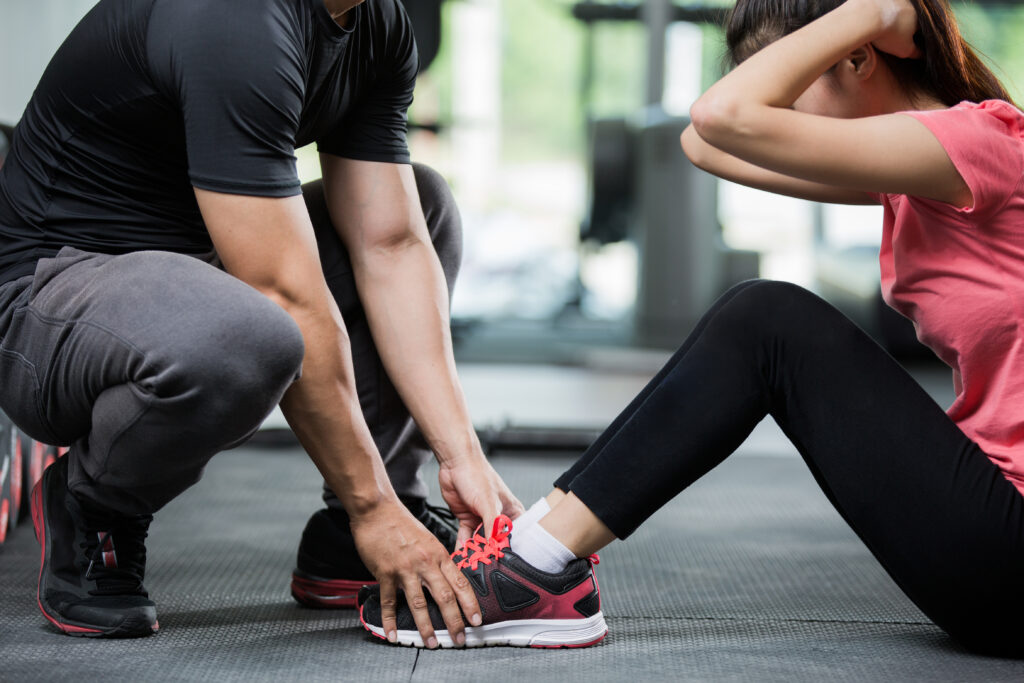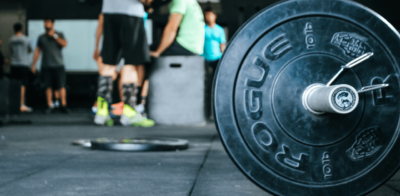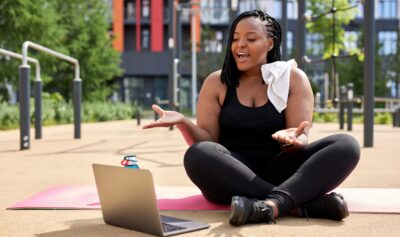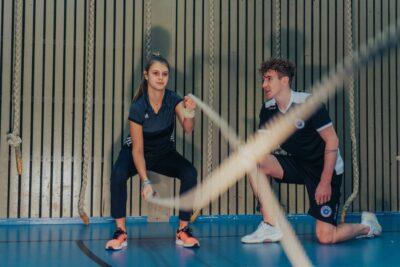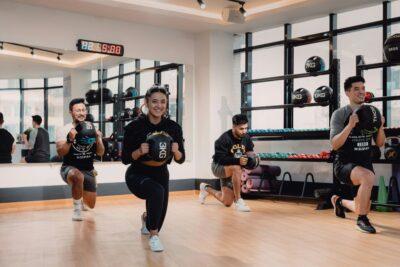Before you train, it’s important to listen.
A personal training assessment is an essential onboarding step for personal trainers. Incorporating performance analysis into your initial sessions will help you deliver safe, successful training. You’ll also be able to create customized workouts that truly work for your members!
At ABC Glofox, we help gyms and trainers deliver the best possible training experience—and personal training assessments are a core part of it.
As an added bonus, we’re partners with ABC Trainerize, the world’s leading personal training software—which can help you provide the best possible experience to your members, 24/7.
Let’s explore how a personal training assessment can help you deliver world-class training to every single client you work with.
Understanding the Purpose of Personal Training Assessments
A personal training assessment is the starting point for every new training relationship.
As a trainer, a proper assessment helps you understand a person’s current fitness level, including opportunities for improvement and possible barriers (such as an old injury). By measuring their strength, mobility, and endurance, it’s easier for you to create fitness programs that actually work for your members. Knowing where they are now helps you make a plan to reach their goals.
Plus, these assessments build trust between you and your members from day one. When members see real results from a plan built just for them, they stay longer and often tell others about your gym.
📝 Read More: Successfully Choosing the Right Personal Training Business Model
How to Choose the Right Assessment Tools
Every successful training relationship starts with a complete personal training assessment. Picking the right tools means gathering useful information without overwhelming your client. Here’s how to get started:
#1: Understand typical assessment categories
Your personal training assessment form should cover a few key areas:
- Health questions
- Movement screening
- Strength tests
- Endurance tests
- Body measurements (e.g. body composition analysis)
Together, these give you a clear picture of your client’s current fitness level. Choose tools that connect with your client’s goals (e.g. muscle gain, weight loss, etc.) and give you numbers you can track as they improve.
📝 Check Out: The Fitness Questionnaire – How to Use It for Your Fitness Business
#2: Consider your clients’ comfort and capability
Even the best assessments fail if they intimidate your clients. Pick tests that match what your client can actually do right now.
For instance, if someone’s just starting out, simple movement checks work better than heavy strength tests that might hurt them or make them feel bad.
Make sure your personal trainer assessment form has different options you can adjust based on your client’s comfort level. You’ll learn when you can safely push them beyond their comfort zone as your training relationship develops.
#3: Balance being comprehensive with being efficient
While you might want to gather tons of information, long personal training assessments can tire out your clients and eat up training time. Instead, choose a focused set of tests that tell you the most in the least amount of time.
For example, watching a client do an overhead squat shows you several movement patterns at once, which is faster than doing many separate tests. This keeps clients engaged during the whole assessment process.
Assessing Mobility, Strength, and Endurance
Next, it’s time to evaluate the three core aspects of physical fitness: mobility, strength, and endurance. Each area connects with the others to show a complete picture of your client’s current abilities.
Mobility testing
Mobility is the foundation that supports everything else. Without good mobility, strength and endurance can’t develop properly.
Start with basic movement pattern assessments like the overhead squat, which reveals limitations in ankle, hip, spine, and shoulder mobility.
Other basic movement assessments include:
- Inline lunge
- Straight leg raise
- Shoulder reach test
- Etc.
(Need more ideas? Check out the functional movement screen to learn to assess the 7 fundamental movement patterns across all fitness.)
Document what you observe in your personal training assessment form, noting issues like heels lifting, knees caving in, or excessive forward lean. These observations will guide your mobility work in future sessions.
Pro Tip: Take photos or videos (with permission) to show clients their movement patterns and track improvements over time.
Strength testing
Next, evaluate how effectively your client generates force. Your strength tests should target the major movement patterns:
- Pushing (chest press, shoulder press)
- Pulling (rows, pull-ups)
- Squatting (bodyweight or weighted)
- Hinging (deadlift variations)
- Carrying (farmer’s walks)
Record your client’s performance metrics and movement quality in your notes. When their form breaks down during strength tests, it can sometimes confirm the mobility limitations you spotted earlier.
Endurance testing
With mobility and strength baselines established, endurance testing completes your personal training assessment. This shows how well your client’s body maintains performance over time.
Consider including both:
- Cardiovascular endurance tests e.g., the 3-minute step test or 1-mile walk
- Muscular endurance tests such as timed planks or maximum repetition push-ups
The first one gives insights into overall conditioning, while the second evaluates muscle stamina.
Pay attention to how mobility limitations or strength imbalances might affect your client’s endurance. For example, poor shoulder mobility might cause early fatigue during pushing exercises. These connections highlight how the different fitness components influence each other.
Remember: Always record your findings in detail on your personal trainer assessment form so you can track improvements and adjust programming as needed.
How to Personalize Assessments for Each Client
Every client walking through your door has unique goals, limitations, and preferences. Personalizing your assessment process builds trust and shows you truly care about their individual needs.
Tailor your questions to their goals
If a client wants to run a marathon, focus more on endurance tests than if they’re training for strength. For weight loss clients, include body composition measurements. For injury recovery, emphasize mobility assessments in the affected areas.
📝 Check Out: Fun Fitness Challenges: Super Simple and Super Important
Adjust for age and fitness level
A 65-year-old beginner needs different baseline tests than a 25-year-old athlete. Your personal training assessment form should have options for different populations. Don’t force older clients through high-impact tests or beginners through complex movements they’re not ready for.
Be flexible with your approach
Some clients prefer data-driven assessments with lots of numbers. Others may feel intimidated by too much measurement. Pay attention to their comfort level and adjust your personal training assessment accordingly.
Pro Tip: ABC Glofox’s member profiles let you store detailed assessment notes that you can reference anytime, making personalization easier across multiple sessions.
Setting Goals After the Assessment
Once you’ve completed the personal training assessment, it’s time to transform that data into a clear plan of action.
Review results together
Sit down with your client and explain what the assessment revealed in simple terms. Point out strengths to celebrate and areas for improvement. This creates a shared understanding of where they’re starting from.
Set SMART goals
Next, help your client create goals that are SMART (Specific, Measurable, Achievable, Relevant, and Time-bound) based on their assessment results. For example:
- Increase squat depth by 4 inches in 6 weeks
- Improve step test recovery time by 20% in 3 months
- Perform 10 push-ups with proper form by the end of the month
Create a roadmap
Finally, outline the steps they’ll take to reach these goals. Include specific mobility work for limitations you identified, progressive strength training, and appropriate cardio. Having this clear path forward builds confidence and excitement.
Remember: Document these goals in your personal training assessment form so you can refer back to them during future sessions and reassessments.
📝 Read More: How to Open a Personal Training Studio
Reassessing and Adjusting the Program
Assessment isn’t a one-time event—it’s an ongoing process that guides your training relationship.
Schedule regular check-ins
Plan to reassess every 4-8 weeks depending on your client’s goals. These check-ins help clients see progress and stay motivated.
Compare to baseline measurements
During reassessment, repeat key tests from your initial personal training assessment. Did their mobility improve? Are they stronger? Has their body composition changed? These comparisons provide objective evidence of progress.
Adjust based on results
If something’s working, keep it. If progress has stalled, try a new approach. Ongoing refinement based is what separates great trainers from average ones!
FAQs about Personal Training Assessment Forms
How do I do an assessment as a personal trainer?
Start with a health questionnaire, then perform targeted movement, strength, and endurance tests based on your client’s goals. Document everything in your persona trainer assessment form and analyze the results—you’ll use this information to create a customized workout program.
What is a personal fitness assessment?
A personal trainer assessment is a step-by-step evaluation of a client’s current physical abilities, including their health history, movement patterns, strength, endurance, and body composition. It establishes a baseline from which progress can be measured.
What does a personal training assessment look like?
Typically, it includes a health questionnaire, movement screening (like the overhead squat assessment we mentioned above), strength tests for major movement patterns, and endurance tests. It should take 45-60 minutes to complete.
You’ll observe your client, document findings, and explain their preliminary results. All this valuable information will help you create a personalized training plan for them going forward.
Why are personal training assessments important?
Assessments establish a fitness baseline for your clients. They also help you identify limitations, prevent injuries, guide programming, and demonstrate progress. In other words, they’re essential for creating safe, effective, and personalized fitness programs.
And, when your clients can see measurable results, they stay motivated and trust your expertise more.
How do you prepare for a personal training assessment?
As a trainer, prepare by having all necessary equipment ready, reviewing your assessment forms, and creating a comfortable environment. Advise your clients to wear comfortable clothes, show up well-hydrated, and avoid intense exercise for 24 hours before the assessment.
How often should personal training assessments be done?
Initial assessments should be performed before training begins, with reassessments every 4-8 weeks depending on your clients’ goals. Reassessing regularly helps track progress and provides opportunities to adjust programming as needed.
Deliver Better Training Experiences with ABC Glofox
In a nutshell, personal trainer assessments aren’t just paperwork. When done properly, these assessments help you create customized programming that your clients can see and feel working.
ABC Glofox gives you everything you need to master the assessment process. Our all-in-one platform helps you spend less time managing paperwork and more time doing what you do best: changing lives through fitness.
Get a free demo today and see how ABC Glofox can help you deliver next-level training experiences.


